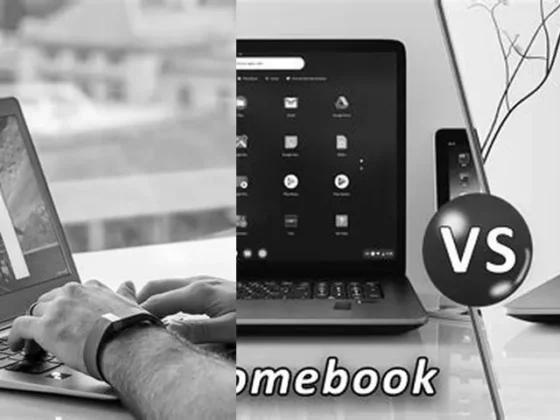Can Chromebooks Emulate Windows? Exploring the Possibilities and Game-Changing Tools: Are you tired of lugging around a heavy Windows laptop, wishing for a lighter and more efficient alternative? Well, look no further because Chromebooks are here to save the day! But hold on, can a Chromebook actually emulate Windows? In this blog post, we will dive deep into the capabilities of Chromebooks when it comes to Windows emulation. Get ready to explore the fascinating world of Chromebook’s emulation powers, from running Android apps to bringing Windows games to life. So, buckle up and get ready to be amazed by what your trusty Chromebook can do!
Understanding Chromebook’s Capabilities for Windows Emulation
Chromebooks are known for their simplicity, speed, and security. However, there has always been a demand for them to run Windows applications, particularly in enterprise environments. The introduction of Parallels Desktop for Chromebook Enterprise marked a significant milestone, allowing these lightweight machines to emulate Windows 10. This powerful software transforms high-powered Chromebooks into devices capable of running Windows just like a traditional Windows laptop.
Parallels Desktop for Chromebook Enterprise: A Game Changer
For organizations and individuals who want the best of both worlds – the agility of a Chromebook and the utility of Windows software – Parallels Desktop for Chromebook Enterprise is a dream come true. Parallels Desktop is not just any virtualization software; it’s specifically tailored for Chromebooks, ensuring that the user experience is smooth and efficient. By leveraging this advanced tool, users can effortlessly switch between Chrome OS and Windows, accessing a variety of Windows applications on their Chromebook.
Setting Up Parallels Desktop on Chromebook
- Ensure that your Chromebook meets the system requirements for Parallels Desktop.
- Contact your organization’s IT administrator to get access to Parallels Desktop for Chromebook Enterprise.
- Once granted access, follow the installation guide provided by Parallels to get started.
- Launch Parallels Desktop and begin installing your desired Windows applications.
Emulating Android Apps on Chromebooks
Chromebooks aren’t limited to running Chrome OS apps. With the help of Android Studio and the ARChon emulator, users can test and run Android applications. This expands the Chromebook’s versatility, making it a suitable device for developers and users who want to enjoy a broader range of applications.
Installing and Using Android Emulators on Chromebook
- Install Android Studio from the Google Play Store and set it up by following the on-screen instructions.
- For ARChon emulator, download the ARChon Runtime and follow the instructions to load it as an unpacked extension in Chrome.
- Once set up, you can begin running Android APKs on your Chromebook.
Linux Emulation: Expanding Chromebook’s Horizons
Chromebooks were originally designed to leverage cloud computing, with most applications and services running online. However, with the integration of Linux support, Chromebooks can now run Linux applications, including using emulators like Wine to install Windows software (.EXE files) that do not have a web or Android app equivalent.
Installing Wine to Run Windows Software
- Enable Linux on your Chromebook in the settings menu.
- Open the Linux terminal and install Wine using the appropriate command lines.
- Download Windows applications and use Wine to install them on your Chromebook.
Bringing Windows Games to Chromebook
Gaming on Chromebooks has always been limited, but with the introduction of Steam and enabling Proton, users can now install and play a variety of Windows games. This capability is particularly exciting for gamers who want to leverage their Chromebook’s hardware for gaming.
Setting Up Steam and Proton for Gaming on Chromebook
| Step | Action |
|---|---|
| 1 | Enable Linux on your Chromebook and install Steam through the Linux terminal. |
| 2 | Launch Steam and go into the settings to enable Proton for all games. |
| 3 | Alternatively, you can enable Proton for specific games through the Compatibility tab in each game’s properties. |
Conclusion: Chromebooks and Windows Emulation
With the development of Parallels Desktop for Chromebook Enterprise, the emulation of Android apps through Android Studio and ARChon, the Linux-based Wine emulator, and gaming advancements with Steam and Proton, Chromebooks have transcended their original cloud-centric design. They now offer a versatile platform that can cater to a wide range of needs, from professional work environments to casual gaming sessions.
By following the outlined steps and tips provided in this guide, Chromebook users can unlock the full potential of their devices, breaking free from the limitations once associated with Chrome OS. Whether you’re looking to run essential Windows software, develop and test Android apps, install Linux applications, or immerse yourself in the world of gaming, your Chromebook is now more equipped than ever to rise to the occasion.
FAQ & Related Questions about Can A Chromebook Emulate Windows?
Q: Can a Chromebook emulate Windows?
A: Yes, with the help of virtualization software like Parallels Desktop for Chromebook Enterprise, Chromebooks can run Windows 10 and function as regular Windows laptops.
Q: Can a Chromebook run an emulator?
A: Yes, Chromebooks can run emulators like Android Studio and ARChon, which allow them to run Android APKs written for ChromeOS.
Q: How do I install Windows apps on my Chromebook?
A: There are two ways to install Windows apps on a Chromebook. You can either use a remote desktop connection to connect to a Windows computer and run Windows software, or install virtualization software like Parallels or VMware to run Windows in a virtual machine.
Q: Can you emulate Windows 10 on a Chromebook?
A: Yes, with the use of Parallels Desktop for Chromebook Enterprise, Chromebooks can emulate Windows 10 and function as regular Windows laptops.
Q: How do I install a Windows emulator on my Chromebook?
A: To run a Windows 10 emulator on your Chromebook, you can follow these steps:
1. Install Crossover for the Chrome Operating System.
2. Prepare for Windows Program Installation.


